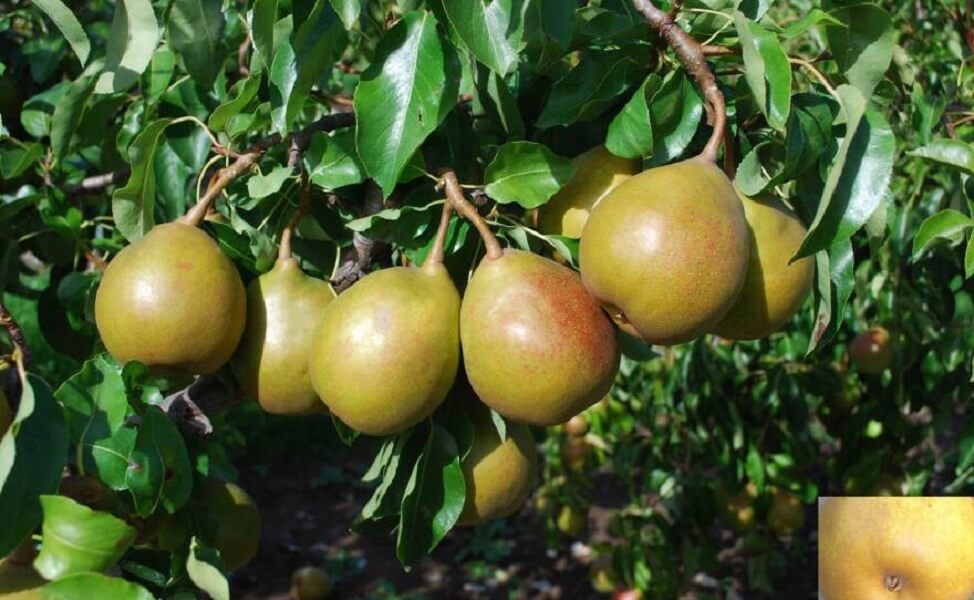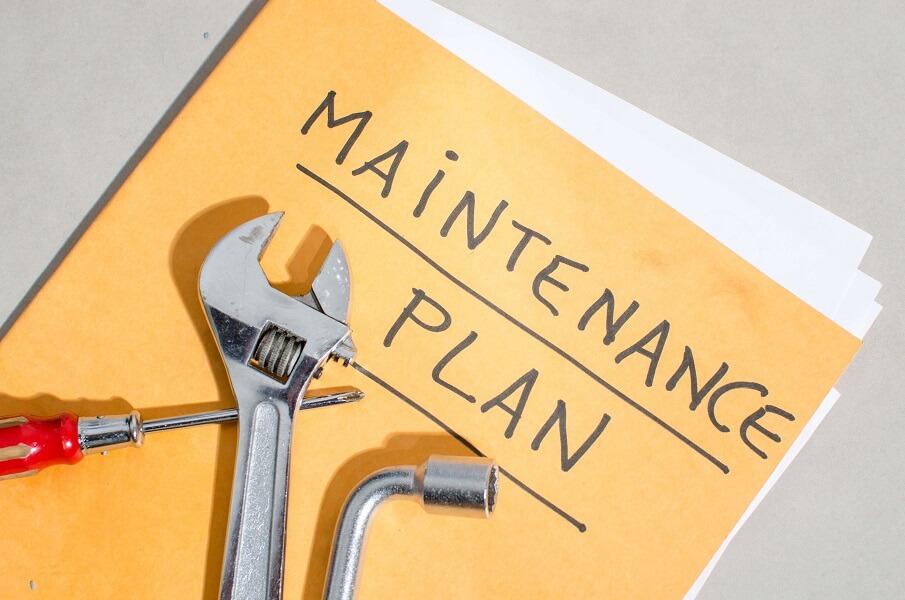Pears are a pleasant addition to any garden in the United Kingdom. Not only do they provide a delectable harvest, but they also make for a stunning landscape feature with their spring flowers and glossy leaves. If you have the correct expertise and take the necessary precautions, you will be able to enjoy a plentiful supply of juicy and flavorful pears if you grow your own pears. This may be a very gratifying endeavour. Beginning with the selection of the appropriate type and ending with the harvesting of the rewards of your labour, this guide offers a complete look at how to effectively cultivate pears in the United Kingdom.
Choosing the Right Variety
Choosing the right pear variety is the first crucial step in ensuring a successful pear harvest. In the UK, several varieties thrive well, thanks to the temperate climate. Here are some key factors to consider:
Climate Compatibility: Select pear varieties that are well-suited to the British climate. Popular choices include ‘Conference’, ‘Williams’, and ‘Comice’. These varieties are known for their hardiness and ability to produce good yields in varying weather conditions.
Pollination Requirements: Pear trees generally require cross-pollination with another compatible pear variety to set fruit. It’s essential to plant at least two different varieties that bloom at the same time to ensure good pollination. Alternatively, choose self-fertile varieties like ‘Concorde’ if space is limited.
Rootstock Selection: The choice of rootstock affects the size, vigor, and disease resistance of your pear tree. Quince rootstocks, such as Quince A and Quince C, are commonly used in the UK and provide good control over tree size, making them ideal for small gardens.
Planting Pear Trees
Once you have selected your pear varieties, the next step is planting. Here’s how to ensure your pear trees get off to the best start:
Site Selection: Pear trees thrive in full sun and well-drained soil. Choose a site that receives at least 6-8 hours of sunlight per day. Avoid low-lying areas where frost can settle, as late spring frosts can damage blossoms.
Soil Preparation: Pear trees prefer slightly acidic to neutral soil (pH 6.0-7.0). Before planting, improve soil structure and fertility by incorporating well-rotted manure or compost. Good drainage is crucial, so if your soil is heavy clay, consider planting on a mound or raised bed.
Planting Process: Plant bare-root trees during the dormant season (late autumn to early spring) and container-grown trees at any time, though autumn is ideal. Dig a hole twice as wide and as deep as the root ball. Position the tree so that the graft union (the knobby area where the tree was grafted onto the rootstock) is just above the soil surface. Backfill with soil, firm gently, and water thoroughly.
Spacing: Space standard trees about 4.5-6 meters apart, semi-dwarf trees 3-4.5 meters apart, and dwarf trees 2-3 meters apart to ensure adequate air circulation and sunlight penetration.
Caring for Pear Trees
Proper care and maintenance are vital to ensure healthy growth and high-quality fruit production. Here’s how to care for your pear trees throughout the year:
Watering: Young pear trees need regular watering during dry spells, especially in the first two years after planting. Mature trees are more drought-tolerant but benefit from deep watering during prolonged dry periods. Aim to keep the soil evenly moist but not waterlogged.
Mulching: Apply a layer of organic mulch, such as compost, wood chips, or straw, around the base of the tree. Mulching helps retain soil moisture, suppress weeds, and regulate soil temperature. Keep the mulch a few inches away from the trunk to prevent rot.
Feeding: Pear trees benefit from an annual application of balanced fertilizer in early spring. Use a slow-release granular fertilizer or organic options like fish emulsion or well-rotted manure. Avoid excessive nitrogen, as it promotes leafy growth at the expense of fruit production.
Pruning: Pruning is essential for shaping the tree, removing dead or diseased wood, and promoting healthy fruiting. Prune pear trees in late winter or early spring before bud break. Focus on maintaining an open center or central leader structure, removing crossing branches, and thinning crowded areas to improve air circulation and light penetration.
Managing Pests and Diseases
Pears, like all fruit trees, are susceptible to various pests and diseases. Vigilant monitoring and prompt action can prevent significant damage and ensure a healthy harvest.
Common Pests:
Codling Moth: This pest lays eggs on the fruit, and the larvae burrow into the pears. Use pheromone traps to monitor and disrupt mating. Apply appropriate insecticides if necessary.
Pear Midge: The larvae of this small fly cause fruit distortion. Remove and destroy affected fruitlets to reduce the pest population.
Aphids: These sap-sucking insects can weaken trees and spread diseases. Control aphids with insecticidal soap or natural predators like ladybirds.
Common Diseases:
Fire Blight: A bacterial disease causing wilting and blackened branches. Remove and burn affected parts immediately. Use resistant varieties and avoid heavy nitrogen fertilization.
Scab: A fungal disease causing dark, scabby patches on fruit and leaves. Apply fungicidal sprays during the growing season and practice good sanitation by removing fallen leaves and fruit.
Pear Leaf Blister Mite: These tiny mites cause raised blisters on leaves. Prune and destroy affected leaves and apply miticides if necessary.
Thinning and Harvesting
Thinning and harvesting practices greatly influence the quality and size of your pears. Here’s how to manage these processes effectively:
Thinning: Pear trees often set more fruit than they can support, leading to small, poor-quality pears. Thin fruitlets when they are about the size of a marble, leaving 1-2 fruits per cluster and spacing them about 15-20 cm apart. Thinning ensures larger, healthier fruit and prevents limb breakage from excessive weight.
Harvesting: Pears should be harvested when they are mature but still firm, as they ripen off the tree. The timing varies by variety, but generally, pears are ready from late summer to early autumn. To test for maturity, lift the pear gently; if it separates easily from the spur, it is ready to pick. Store pears in a cool, dark place to ripen fully.
Winter Care and Protection
Proper winter care is crucial to protect your pear trees from harsh weather and prepare them for the next growing season:
Winter Protection: Young trees are particularly vulnerable to frost and wind damage. Protect them with tree guards or wraps and consider applying a thick layer of mulch to insulate the roots.
Dormant Season Maintenance: During the dormant season, inspect trees for signs of disease or pest damage. Clean up fallen leaves and fruit to prevent overwintering pests and diseases. Apply a winter wash or dormant oil spray to control overwintering pests.
Soil Health: Winter is an excellent time to improve soil health. Test soil pH and nutrient levels and amend accordingly. Consider planting cover crops, such as clover or winter rye, to enhance soil structure and fertility.
Training and Espalier Techniques
Training pear trees not only enhances their aesthetic appeal but also maximizes space and increases fruit production. Espalier is a popular training technique, especially for small gardens or against walls.
Espalier Basics: Espalier involves training trees to grow flat against a support, such as a wall or trellis, in a symmetrical pattern. This method improves light exposure, air circulation, and ease of harvesting.
Training Steps:
Initial Setup: Plant the tree about 30 cm away from the wall or trellis. Install horizontal wires or a wooden framework to guide the branches.
Selecting Branches: Choose the main stem and two lateral branches to form the first tier. Tie them to the support at a 45-degree angle.
Pruning: In subsequent years, prune to maintain the desired shape, removing unwanted shoots and tying new growth to the framework. Aim to create evenly spaced horizontal tiers.
Maintenance: Regularly prune and tie branches to maintain the structure. Thin fruit to prevent overcrowding and breakage. Monitor for pests and diseases, as espaliered trees can be more vulnerable due to their restricted growth.
Maximizing Yield and Fruit Quality
To achieve the best possible yield and fruit quality, consider these additional tips and techniques:
Pollination Enhancement: Increase pollination success by planting a diverse range of flowering plants nearby to attract pollinators. Consider adding a beehive to your garden if space allows.
Grafting: Grafting allows you to grow multiple varieties on a single tree, increasing diversity and ensuring cross-pollination. It also enables you to introduce disease-resistant varieties onto established rootstocks.
Fruit Bagging: Bagging individual fruits with paper or fabric bags can protect them from pests, diseases, and sunburn. Bagging also reduces the need for chemical treatments and improves fruit quality.
Regular Monitoring: Regularly inspect trees for signs of stress, pest infestation, or disease. Early detection and intervention are key to preventing severe problems and ensuring healthy growth.
By following these guidelines, you can cultivate a thriving pear orchard in your garden, reaping the rewards of luscious, homegrown pears year after year. Whether you’re a novice gardener or an experienced horticulturist, the satisfaction of picking and enjoying your own pears is well worth the effort. With careful planning, diligent care, and a little patience, you’ll be on your way to pear perfection.
Sources: https://www.chrisbowers.co.uk/ – Whispering Trees Nurseries, West Way, Wimbotsham, King’s Lynn PE34 3QB. Phone: 01366386858




